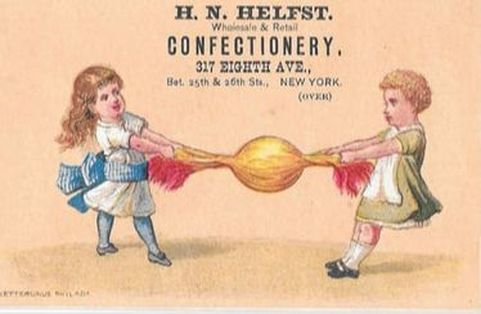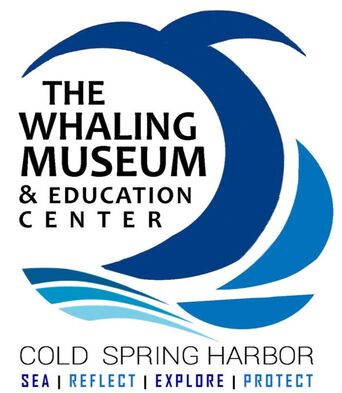|
By Nomi Dayan, Executive Director As you reach for a sweet treat this June in honor of National Candy Month, consider how the abundance of candy today is a rather exceptional thing. For much of human history, sugar was an expensive indulgence reserved for celebratory desserts. Sugary treats were a luxury for the rich. People also used sugar for therapeutic functions, with early candy serving as a form of medicine, including lozenges for coughs or digestive troubles. Sugar was also used as a preservative; similar to salt, sugar dried fruits and vegetables, preventing spoilage. But all in all, sugar was carefully conserved. In George Washington’s time, the average American consumed only 6 pounds of sugar a year (far less than the 130 or so pounds consumed annually per person today). The use of sugar swelled dramatically in 1800’s. Suddenly, sugar was everywhere, and with it came new technological advances in candy production. Sugar shipped from slave-powered plantations in the West Indies became more affordable and available with new, steam-powered industrial processes. These changes were part of the Industrial Revolution, made possible by prized whale oil and its valuable lubricating properties. In 1830, Louisiana had the largest sugar refinery in the world. The invention of the Mason jar in 1858 drove demand for sugar for canning, and in 1876, the Hawaiian Reciprocity Treaty made sugar even more available. People couldn’t get enough of sweetness. The availability of sugar brought a slew of new inventions to the culinary scene: candy! Confectioneries sprang up everywhere. The shops’ best customers were children, who spent their earnings on penny candy. Hard candies became very popular. As Yankee whaling reached its peak, Victorian-era sweets boomed with a succession of creations: the first chocolate bar was made in 1847; chewing gum followed in 1848; marshmallows were invented in 1850, and in 1880, fudge. People’s breaths were taken away when sweets with soft cream centers were tasted at the Great Exhibition in London in 1851. Some candies, especially hard ones, were sold as being ‘wholesome’ and even healthy. Unfortunately, candy was anything but nourishing. Sugar was sometimes adulterated with cheaper Plaster of Paris or chalk. Other candies were far more toxic. In 1831, Dr, William O’Shaughnessy toured different confectionery shops in London and had a range of dyed candy chemically analyzed; he found a startling number of sweets colored with lead, mercury, arsenic and copper. But as ubiquitous as candy was on land, a sweet treat was quite rare at sea, especially on a whaleship. Sugar on board was a still a luxury reserved for the captain and officers. The crew had to settle for molasses, which was often infested; one whaler wrote it tasted like “tar.” Candy only makes brief glimpses in whaling logbooks, or daily records. On May 22, 1859, William Abbe journaled on the ship Atkins Adams: “Cook & Thompson Steward making molasses candy in galley.” (Earlier on the voyage, he described molasses kegs as “the haunts of the cockroach.”) Laura Jernegan, a young daughter who sailed with her father and family on a three-year whaling voyage, wrote in her diary on board the Roman, “Feb 16, 1871. It is quote pleasant today. The hens have laid 50 eggs…” Then, an exciting thing happened – she passed another whaleship at sea, the Emily Morgan. There was a whaling wife aboard, too! Laura wrote: “Mrs. Dexter [the wife of Captain Benjamin Dexter] sent Prescott [her brother] and I some candy.” In other cultures, whales still facilitated the treat scene – no sugar needed. Frozen whale blubber was (and is) a traditional treat for the Inuit and Chukchi people. Called muktuk, cubes are cut from whale skin and blubber and conventionally are served raw. While whaling in our country is a thing of the past, the years of unrestricted whaling reflect how, in essence, people treated the ocean “like a kid in a candy store,” as noted by author Robert Sullivan. In the 20th century, so many whales were caught so quickly and efficiently that soon even whalers themselves were worried about saving the whales. Today, as we continue to gather resources from the sea, we must ensure the ocean can replenish itself faster than we can sweep its candy off the shelves. Bring Candy History into Your Kitchen
2 Comments
4/5/2021 02:23:19 pm
Wow, I had no idea that candy was a delicacy for whalers and people at sea. My kids love history lessons so I could get some candy and teach them all this. Perhaps, I could find an old candy store somewhere and help them learn how valuable candy was.
Reply
Your comment will be posted after it is approved.
Leave a Reply. |
WhyFollow the Whaling Museum's ambition to stay current, and meaningful, and connected to contemporary interests. Categories
All
Archives
May 2024
AuthorWritten by staff, volunteers, and trustees of the Museum! |



 RSS Feed
RSS Feed
